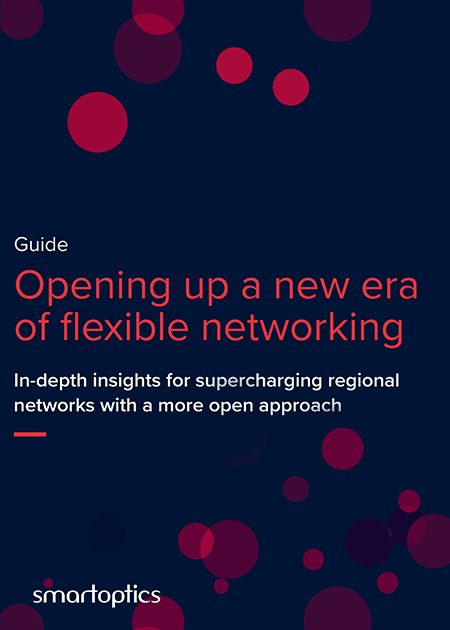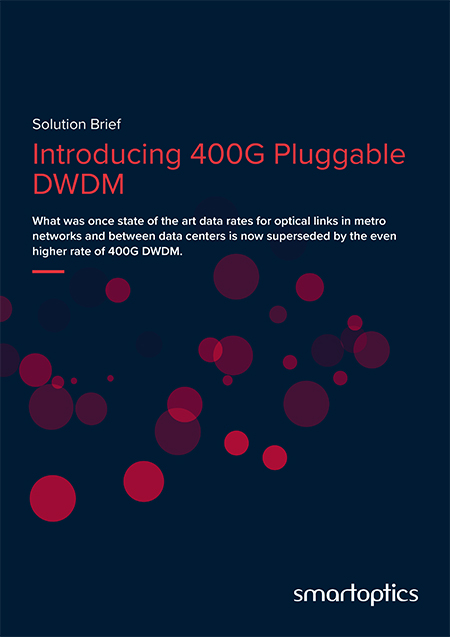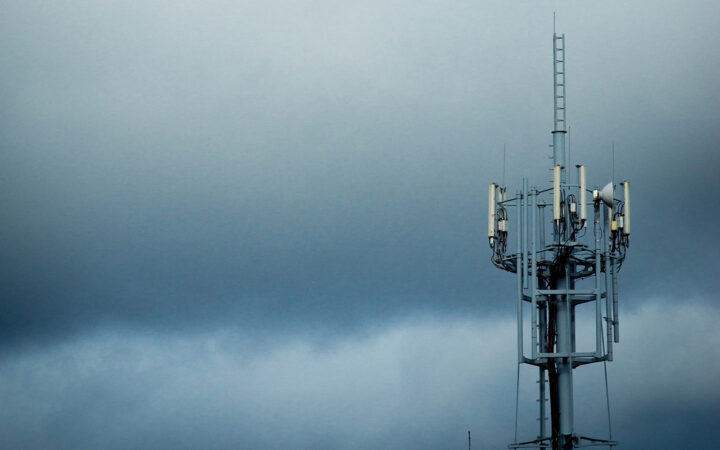WHAT 400ZR MEANS FOR NEXT-GEN DCI AND METRO NETWORKS
Both enterprise data centers and metro networks face increasing data traffic as the connected society takes hold, which puts pressure on network performance. This has driven the development of 400ZR for enabling 400G speeds with flexible hardware configurations. Both next-generation DCI and metro network solutions are centered around medium-range, high-capacity DWDM links with support for 400G. However, data center operators and service providers have some differing needs, which has led to multiple standards related to the original 400ZR.
What is 400ZR?
400ZR is an ethernet-based fiber optic networking standard designed for transmitting 400G speeds at distances of at least 80 km. The interoperable standard was created by the Optical Networking Forum (OIF) and published under the Implementation Agreement (IA) for a 400ZR coherent optical interface. 400ZR+ and OpenZR+ are two separate standards loosely based on the original 400ZR. Together, 400ZR and its related standards will play a key role in enabling next-generation data center interconnect (DCI) and metro network solutions to meet the bandwidth requirements of today and tomorrow.
400ZR for DCI – the original standard
As large-scale data center operators looked to the future, they saw the need for greater cost efficiency, simplicity and interoperability to go along with the higher bandwidth promised by 400G. As a result, they urged the OIF to create the 400ZR IA to ensure that next-generation DCI solutions will be well suited to their needs. To meet these data center needs, the focus of the 400ZR project was on 400G Ethernet with amplified point-to-point DWDM links over DCI up to 120 KM and unamplified, single wavelength links with a loss budget of 11dB. This approach was designed to reduce the cost per bit and enable easy use of embedded optics with existing switches and routers.
400ZR for metro networks – a flurry of new standards
The 400ZR project eventually also caught the eye of network operators who saw the potential of 400ZR for boosting the capacity, flexibility and efficiency of their metro networks. However, these network operators had certain needs that went beyond those of data center networks, which led to work on a couple new standards.
400ZR+ is designed to add a bit more to the original 400ZR standard, such as expanding the range beyond 120 km and enabling a 4x 100G client rate as opposed to only 1x 400G. Although the term 400ZR+ has become widely adopted, it is largely subject to each vendor’s own interpretation and will eventually be replaced by OpenZR+ although both will coexist for a certain period of time.
OpenZR+ is a standard based on a multi-source agreement that was born out of the goal of taking the best of the 400ZR+ and the Open ROADM standards. OpenZR+ aims to combine simplified functionality, high-performance oFEC and interoperability tailored to the needs of service providers. OpenZR+ adds more flexibility to the line rate and line modulation along with interoperability missing from 400ZR+.
The development of both of these standards has broadened 400G hardware support to include the unique needs of metro networks in addition to the initial 400ZR focus on DCI. OpenZR+ even aims to combine a wider variety of needs for service provider long-haul and metro networks as well as DCI.
The differences between 400ZR, 400ZR+ and OpenZR+
When referring to 400ZR broadly, we mean all three of these standards as a whole. Specifically, the original 400ZR standard by OIF can be called OIF400ZR to distinguish it from 400ZR+ and OpenZR+. The table shows the differing targets of the standards and how this has influenced the distances and rates supported.
| Name | OIF400ZR | 400ZR+ | OpenZR+ |
| Target application | Edge DCI | Vendor dependent | Regional networks |
| MSA | Yes | No | Yes |
| Mid span | Yes | No | Yes |
| Distance | 80-120km | ≥ 120km 1) | ≥ 120km 2) |
| Client rate | 400GE | 400GE / 4x 100GE | 100GE/200GE/400GE |
| Line rate | 400G | 400G | 100G/200G/300G/400G |
| Line modulation | DP-16QAM | DP-16QAM | DP-QPSK/DP-8QAM/DP-16QAM |
| FEC | CFEC | CFEC/oFEC/prop FEC | oFEC |
| Form-factor | QSFP-DD/OSFP/CFP2 | QSFP-DD/OSFP/CFP2 | QSFP-DD/OSFP/CFP2 |
400ZR interoperability drives cost efficiencies
Relatively solid multi-vendor interoperability of transceivers had been achieved within data centers prior to 400ZR. However, the longer-range connections between data centers were not as effective when combining transceivers and switches from different vendors. Therefore, 400ZR aims to bring the same level of interoperability found within data centers to DCI. Interoperability has been a major driving force and focus for both OIF400ZR and OpenZR+.
400ZR interoperability is at its best when using QSFP-DD transceivers because they are backwards compatible with previous QSWP system transceiver modules. As a result, 400ZR transceivers can be easily connected to existing switches and other infrastructure without having to replace everything. This is well aligned with the open networking trend and the needs of enterprise data center and metro network operators to make upgrading network infrastructure less expensive and complex.
400ZR transceiver form factors
The two most popular form factors for 400ZR transceivers are QSFP-DD (Quad Small Form-Factor Pluggable Double Density) and OSFP (Octal Small Form-Factor Pluggable). Both of the new form factors are pluggable, making them easy to deploy and manage in DCI and metro networks.
QSFP-DD improves on QSFP (QSFP+, QSFP28, QSFP56) by doubling the number of high-speed electrical interfaces while still maintaining largely the same convenient form factor. This results in a jump from 40G or 100G aggregate to 200G or 400G, enabling total bandwidth of 14.4T for a single switch. This way, 400ZR will future-proof network capacity by making it easy to meet future growth.
OSFP is a new form factor that is larger than QSFP-DD in all three dimensions and the form factor allows for higher power consumption. OSFP supports 400ZR with the same aggregate bandwidth per switch of 14.4T and 400G speeds although OSFP will also be able to support up to 800G in the future. The additional wattage of OFSP may help with long-haul DWDM links used within WANs. This along with looking far ahead to 800G are two of the main arguments for OFSP. However, because of its smaller footprint and backwards compatibility, QSFP-DD is being more widely adopted in implementing 400ZR, at least initially.
Upgrading to 400ZR is even easier with Smartoptics networking solutions
400ZR as implemented in the QSFP-DD form factor already makes it easy to upgrade to 400G by just switching transceivers. This way, you don’t have to replace your optical infrastructure. But it’s even easier with flexible DWDM-based open networking from Smartoptics. The Smartoptics solution combines the benefits of pluggable PAM4 transceivers with the flexible DCP-M open line system. This enables highly automated, low-cost 100G networking while also supporting 400ZR, so that existing 100G channels will not be impacted at all while adding 400G channels alongside them.

The guide for a new era of flexible networking
Download our guide to discover a new path to flexible networking

Get the 400G pluggable DWDM solution brief
Download our solution brief and learn more about the 400G DWDM solution
Related articles

What is a SAN and how does it protect mission-critical workloads?

What is Fibre Channel used for?
